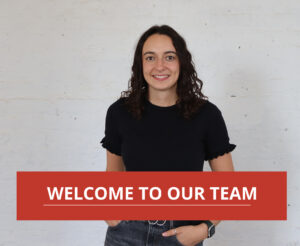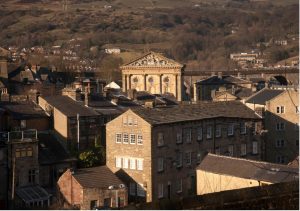A few weeks ago, we discussed how – for the foreseeable future – we’ll all be enjoying the areas closer to home. While travel is restricted, or perhaps just not as appealing as it once was, we’re looking locally for the enjoyment, experiences, and commodities we’re used to.
Enter the concept of the 15-minute neighbourhood.
These are urban experiments that set out to “offer services and quality of life within the space of 15 minutes on foot from home”. A simple idea originally put forth by Professor Carlos Moreno, they’re modelled on a “new relationship between citizens and the rhythm of life in cities”. In a changing world, we must develop and plan differently to accommodate our shifting expectations and requirements.
Towns are changing
Town centres are undergoing monumental change. And while the pandemic has certainly played its part, this has been a long time coming.
Take retail, for example. For years, in-person shopping has been on the decline in favour of shopping online. In 2019, retail property capital values dropped 12%, while rental values fell by 4.5%. And this will only fall further with the drop in city-centre foot traffic.
With the massive uptake of flexible working, office space is less in-demand for at least the short-term. So if there are fewer offices and retail spaces, what will fill the gap?
In short, people are using their town centres differently. They are hubs of culture, connection, and community. We visit these areas for the experiences and interaction we cannot replicate at home.
What makes a good 15-minute neighbourhood?
A good 15-minute neighbourhood should be walkable, with everything you need close by. More than that, they need to be pleasant to walk in. Navigation should be intuitive – easy to move from point A to point B, from entrance to exit. We want somewhere that lets us know that we’ve arrived and guides us to all the commodities or spaces we might want to enjoy.
And these areas also move beyond geography. They are about the kind of society we want to build. Economy, urban planning, health, and well-being are all interdependent. Good places should be clean – a massive priority right now – safe, friendly, and appeal to a wide range of ages, demographics, and types of people.
They should boast a good mixture of things to do and visit. Both indoor or outdoor, daylight or after dark, sedentary or active, and family or adult activities. It’s about creating a variety of uses and experiences that help cut down unnecessary journeys for people.
How do we achieve it?
Walking time circles are a big part of our process here at Placemarque. Drawing a 15-minute walking circle around an area is a key way to demonstrate town navigability and assist with the mapping of a place.
But what should be within a 15-minute neighbourhood?
The specific requirements of these areas will vary depending on the person and location. But some safe bets include a park, pub, shops, transport links, school, doctor, swimming pool, and library, for example.
Wayfinding will be a massive part of these reimaginings, especially as we incorporate one-way systems and social distancing throughout our town centres. And as we guide people to the quieter routes, new parts of town will also open up.
We need to communicate what’s available in a given area and how it can easily and safely be found. A mix of permanent and temporary wayfinding is how we can help visitors to meander less; instead making purposeful, productive visits to their local areas.
At Placemarque, we’re passionate about places. We’re experts in bringing simplicity, excitement, and a sense of adventure back to local areas. If you would like to discuss your wayfinding needs or have any questions about our services, call us today on 0161 241 3174




